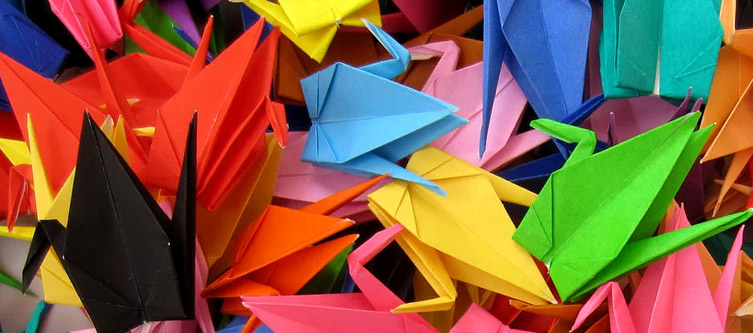Even if you’ve never visited Japan, you might probably know something about origami. You might’ve even tried origami in middle school, even if you haven’t worked on an art project. This is a Japanese art form, which is now popular across the world. Origami is the art of paper folding. In Japanese, ‘ori’ means folding and ‘kami’ means paper.
According to Japanese pronunciation, the word is pronounced as ‘origami’. Only hands are used in this form of art to create a shape out of a piece of paper. You can’t alter the material with the use of scissors or any other implement. Even markings are not done on paper in origami.
Origins of origami
The exact origin of origami is still unknown. Many are of the opinion that this Japanese art in its original form came from China. The Chinese paper folding craft is called ‘zhe zhi’. There are people who dispute that origami’s principles have been a part of Japanese culture. They believe that it existed long before the invention of paper.
In those times when paper was not invented, materials like leather were used for decorative folding. Many others argue that origami has its roots in Europe. They are of the opinion that folded boat designs were seen in the early 15th century. They also say that decorative napkin folding was commonly seen in those times in well-to-do homes.
It’s quite possible that each of these cultures might’ve come up with their own form of paper folding. However, origami has now become a cornerstone of Japanese culture. The history of Japan says that origami was once a craft of the elite. This is true to a great extent considering the fact that paper was expensive in those times.
It was also a rare commodity. Handmade paper that came from China first made its way into Japan during the 6th century. It was brought by Buddhist monks. Origami was first used as decoration in Japan during religious ceremonies. Such decorations were also used during Shinto weddings in the 17th century.
Origami during the Shogun period
The period between 1603 and 1868 in Japan is often referred to as the period of Shoguns. During this period, origami was a part of the young warriors’ training program. They were given the task of completing origami folds of increasing levels of intricacy. It was their test of precision and strategy.
By the end of the 18th century, the paper was more readily available in the country. This meant that citizens could learn origami as a pastime. Books with clear instructions on how to create a variety of folded shapes were published. In the 19th century, origami was introduced into the mainstream school curriculum. Akira Yoshizawa is believed to have brought origami to mainstream international acclaim.
Born in 1911, he was widely regarded as the ‘grandmaster’ of Japanese origami by his death in 2005. He had made more than 50,000 origami creations by 1989 and had published 18 instructional books. The introduction of the wet fold was among his most popular contributions to the origami technique.


